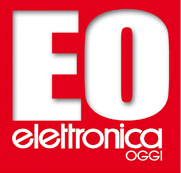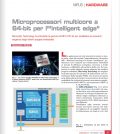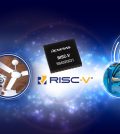Nec and Renesas: «The merger will bring to market better embedded products»
-

- Tweet
- Pin It
- Condividi per email
-

Dalla rivista:
Elettronica Oggi
Interview with Rob Green, President & Ceo of Renesas Electronics Europe, and Tsutomu Miki, Chairman of the company
Following, on April 1st, the global merger between Nec Electronics Corporation and Renesas Technology Corp. to create a new integrated company named Renesas Electronics, also in Europe the business integration process is completed with the foundation of Renesas Electronics Europe. To better understand the real implications of this agreement, Elettronica Oggi interviewed Rob Green, president & ceo of Renesas Electronics Europe, and Tsutomu Miki, chairman of the company.
Nec Electronics and Renesas are two big players in the worldwide semiconductor industry: could you explain what key goals and synergies are expected to be achieved in the Old continent with this merger?
Rob Green: One of our key goals is to provide an improved embedded product to the market. Europe, together with Japan, is a leader in automotive electronics and our combined resources in Europe will be utilised for more product innovation to support the growing requirements of safety, convenience, security, and driver information, for example. We can also see this in new platforms for the mobile and multi-media markets as well as for industrial applications.

Rob Green, president & ceo of Renesas Electronics Europe
Tsutomu Miki: On the financial side, we’re working towards international revenues at 60 per cent. The first step is to get them up to 50 per cent, as each company currently generates about 44 per cent of its sales internationally. The European market is clearly of vital importance in achieving this goal.
What will be the first issues and the most difficult things that you plan to face immediately after the formal merger, to start the integration of the operations of the two companies in Europe? What will be, respectively, the tasks of the two management teams?
Tsutomu Miki: Our first task will be to form a single, cohesive team out of two companies that, up to now, have been competitors. We’ll start by establishing a sales organisation whose structure is transparent and clear for our customers and partners. Although team building is a challenge in any merger, don’t forget that we already have experience in this area. After all, Renesas was founded when the system LSI departments of Hitachi and Mitsubishi merged in 2003. This is proof that big mergers can succeed, as long as both parties focus on creating a new corporate culture that builds on the existing strengths of each company. It can take time for people’s mindsets to evolve, and that’s quite normal. But I’m confident we’ll get there as all the staff and management are committed to making the merger work. The whole will certainly be greater than the sum of its parts.

Tsutomu Miki, chairman of Renesas Electronics Europe
How will the prominent position of Renesas in the microcontroller (MCUs) segment influence the new market and technological strategy? How will the possible overlapping of product lines be managed in this or others areas and how this consolidation process could change the destiny of many engineers and employees, in terms of layoffs?
Rob Green: After April 1st, Renesas Electronics – the merged company’s new name – will be the world’s number 1 manufacturer of MCUs. In many applications and markets, we’ll become a key partner for our customers. This will influence our market and technological strategy more towards the key application segments. Although there will be some commonality in certain product lines, the two companies have more synergies than overlaps. Some consolidation in the production area has already been completed. Out of 15 sites with 25 production lines, 10 sites and 16 production lines remain. In Europe, the headcount of the merged company will help us take on projects and business fields that could not be addressed up to now due to resource limitations, especially at Nec Electronics. Of course we have to build an efficient organisation for long term sustainability, but our emphasis right now is on how to utilise the resources for further innovation and customer support rather than on headcount reduction.
What will be the effects of this merger in terms of evolution of the process technology and of improving the manufacturing capacity of the fabs?
Tsutomu Miki: Our larger size will certainly deliver us an advantage in the race to keep up with new process technologies, as both companies were already at the forefront of developments prior to the merger. Combining our technological strengths gives us great potential to broaden the product portfolio and provide highly integrated embedded solutions. As far as production capacity is concerned, we believe the 10 sites and 16 production lines we have now will be absolutely sufficient. We need to keep the expertise and the process technology in-house so we can manufacture our products ourselves and ensure top-flight product quality. After all, that’s what our customers demand.
What will be the key advantages for the users of these product/solutions in Europe?
Rob Green: Our products will be more highly integrated, particularly adding mixed signal functionality, creating a closer fit to the application, and running with very low power consumption. Users get the benefit of this in a very cost-effective and reliable product with improved energy consumption performance. We are seeing this in portable products, but also in the automotive market in products designed for safety, security, dashboard and body applications, for example, and also in the industrial market for solid state lighting, metering and industrial automation applications, to name but a few.
Giorgio Fusari
Contenuti correlati
-
I compilatori HighTec supportano l’IP RISC-V di Andes
HighTec EDV-Systeme, fornitore di compilatori per il settore automotive, ha annunciato il supporto per l’IP RISC-V di Andes nel suo compilatore C/C++ ottimizzato per il mercato automotive. Il compilatore HighTec C/C++ è basato sulla tecnologia open source...
-
Microprocessori multicore a 64-bit per l’“intelligent edge”
Microchip Technology ha introdotto la gamma di MPU PIC 64 per soddisfare le crescenti esigenze degli odierni progetti embedded Leggi l’articolo completo su EMB93
-
5 prodotti OSHW per progetti embedded flessibili e personalizzabili
Optare per un hardware open source significa credere nel potenziale di innovazione, accelerazione e trasformazione di ciascun prodotto o progetto, che deriva da una maggior capacità di controllo sulla tecnologia e dalla condivisione di conoscenze. Le prospettive...
-
Intel porta le sue GPU Arc nelle automobili
Intel è entrata nel segmento delle GPU discrete per applicazioni automotive presentando la sua prima unità dGPU per questo settore. Le GPU sono quelle con architettura Arc e i prodotti inizieranno a essere distribuiti commercialmente nei veicoli...
-
Microchip presenta gli MCU a 32 bit PIC32CK con HSM
Microchip Technology ha annunciato la nuova famiglia di microcontroller PIC32CK a 32-bit con sottosistema Hardware Security Module (HSM) integrato e core Arm Cortex M33 con tecnologia TrustZone per isolare e proteggere il dispositivo. L’integrazione di un HSM...
-
Nuovi standard per illuminazione in un’architettura a zone
Microchip mette a disposizione un’ampia gamma di soluzioni, sotto forma di MCU e CIP (Core Independent Peripheral) che permettono di soddisfare le differenti esigenze dei progettisti impegnati nello sviluppo delle soluzioni di illuminazione destinate ai veicoli della...
-
Microchip facilita l’integrazione USB nei sistemi embedded
Microchip Technology ha presentato la famiglia di microcontroller AVR DU con funzionalità USB (come comunicazione dati, alimentazione e aggiornamenti in-field) per i sistemi embedded. Questa nuova generazione di MCU è stata progettata infatti per fornire anche funzionalità...
-
MCU per automotive: Infineon conquista la vetta
Secondo i dati forniti da TechInsights, il mercato globale dei semiconduttori per automotive nel 2023 è cresciuto in misura pari al 16,5%, facendo registrare un fatturato pari a 69,2 miliardi di dollari. Infineon e NXP continuano a...
-
I primi MCU RISC-V sviluppati internamente da Renesas
Renesas Electronics ha annunciato i primi microcontrollori general purpose basati su RISC-V a 32 bit costruiti intorno ad un core sviluppato interamente al proprio interno. Il nuovo gruppo di MCU è siglato R9A02G021 ed è progettato per...
-
Automotive: il ruolo degli FPGA nell’evoluzione della “In-cabin experience”
Per poter supportare in maniera adeguata l’evoluzione sia della tecnologia sia delle richieste dei consumatori, i produttori stanno sempre più focalizzando la loro attenzione sui dispositivi FPGA, che rappresentano la soluzione ideale per effettuare la regolazione della...
Scopri le novità scelte per te x
-
I compilatori HighTec supportano l’IP RISC-V di Andes
HighTec EDV-Systeme, fornitore di compilatori per il settore automotive, ha annunciato il supporto per l’IP RISC-V di...
-
Microprocessori multicore a 64-bit per l’“intelligent edge”
Microchip Technology ha introdotto la gamma di MPU PIC 64 per soddisfare le crescenti esigenze degli odierni...
News/Analysis Tutti ▶
-
Nuovo Managing Director per Panduit EMEA
Panduit ha nominato Jens Holzhammer nuovo Managing Director per l’area EMEA (Europa, Medio Oriente...
-
Il supporto di RS Italia per Nexans
RS Italia ha annunciato il supporto per i processi d’acquisto e ottimizzare la gestione...
-
SEMI: previste 18 nuove fabbriche di semiconduttori per il 2025
In base ai dati dell’ultimo rapporto trimestrale World Fab Forecast di SEMI, gli analisti...
Products Tutti ▶
-
Nexperia potenzia la sua offerta per l’energy harvesting
Nexperia ha ampliato la sua offerta di prodotti per l’energy harvesting con la famiglia...
-
Un induttore formato 006003 da Murata
È stato presentato in anteprima a CES 2025 il nuovo induttore miniaturizzato di Murata....
-
Uno switcher wide-creepage da Power Integrations
Power Integrations ha realizzato un nuovo IC switcher Wide-Creepage per applicazioni automotive a 800...

















